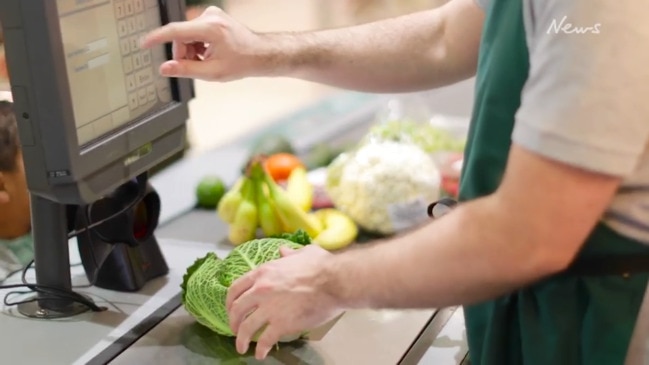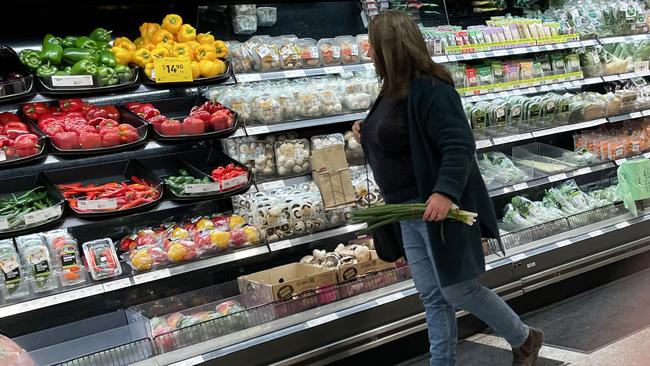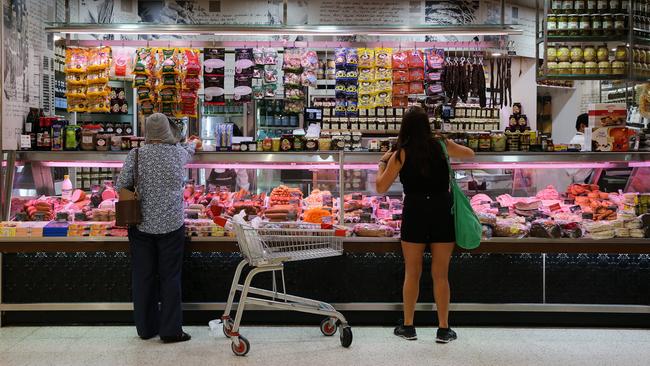Supermarket tactics used to trick shoppers into spending more
Experts have warned of the supermarket tactics used to trick shoppers into spending more.

Retail
Don't miss out on the headlines from Retail. Followed categories will be added to My News.
As Aussies continue to feel the pinch from cost of living pressures, experts have warned of the supermarket tactics used to trick shoppers into spending more.
This comes as many Australians look for ways to cut back their spending, with new NAB research revealing 55 per cent are willing to reduce how much they spend on takeaway and eating out.
As a result, more of us are buying groceries at the supermarket and preparing meals at home, and should be aware of how big businesses are taking advantage of that through deceptive consumer psychology.

Professor Nitika Garg, a consumer behaviour researcher at UNSW, has revealed the supermarkets’ top five tools designed to trigger impulse purchases.
All the tactics listed are based on the psychology of savvy shoppers to push them to “buy more than what (they) have on (their) list”, Professor Garg said.
“Their purpose is to sell more, that’s their job.”
First off, Professor Garg said to keep an eye out for locked-in deals – products which are advertised with bright labels as being capped at a specific price until a certain date.
Consumers often assume the price of the items which are ‘locked-in’ has been reduced from a previous price, although this isn’t necessarily the case.
“The price of the locked-in deals is often the same as the original price of the item,” she said.
Secondly, Professor Garg said to be aware of supermarket layouts that deliberately put staple products such as bread and milk far away from each other, often at the back of the store.
“This tactic is designed to make a consumer walk through the store and spend more time,” she said.
Coming in third is the use of bigger shopping carts, which push shoppers to fill them up more.
According to one U.S. study, the size of shopping carts has doubled since they were first introduced in 1937.
“The idea behind this is that consumers are tricked into thinking their shopping trolley appears to be missing food items,” Professor Garg said.
The fourth tactic used by supermarkets is the playing of relaxed, slow-paced music, which helps to create a calm atmosphere that encourages shoppers to stay longer, thus increasing the chance they will buy more.

Lastly, Professor Garg said to keep an eye on store deals, such as ‘buy two, get one free’.
While these schemes might seem like great value, consumers should pay close attention to expiry dates and the original cost of the item outside of the deal.
“If it’s an item that has a short expiry date, is it realistic that a consumer will consume all three items before the expiry date?” she said.
“Upon closer inspection, you might find that the price of one item is just its regular price, that is, half of the price of two.”
Professor Garg said if consumers have the time they should try shop across multiple stores to get the best and cheapest items, such as pet food.

This comes as new research from NAB found 18 per cent of people are unwilling to cut back on spending when it comes to pets.
This is beaten only by spending on kids’ private school fees (10 per cent) and children’s activities, such as sport and other hobbies (12 per cent).
After eating out, consumers are most willing to cut back on micro treats, such as coffees (50 per cent) and trips to the movies or similar entertainment activities (49 per cent).

This spending lines up with findings from the bank’s financial wellbeing survey, which discovered Aussies invest in things that have the biggest positive impacts on their lives, such as pets, family and their home environments.
Through more considered shopping, consumers are able to save on average around $286 per month by making good decisions before they get to the checkout.
“A lot of the tactics are based on getting the consumer in, because once they’re in, they will likely end up buying a lot more than they expected,” she said.
“In summary, it’s best to be aware of the consumer psychology that supermarkets use to market their products.
“If consumers are more aware of these tactics, they can be more mindful of where they want to rely on these and where they want to be wary of such tactics.”
More Coverage
Originally published as Supermarket tactics used to trick shoppers into spending more



